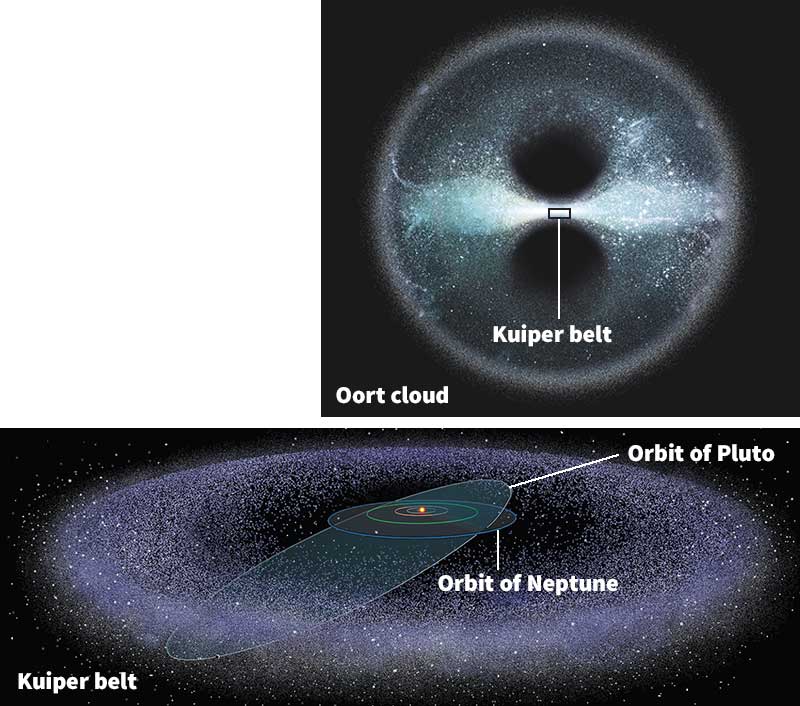Oort << oort or ohrt >> cloud is a cluster of comets, smaller objects, and perhaps even planets in the outermost region of our solar system. The Oort cloud is shaped like a slightly flattened, hollow sphere. The nearest part of the cloud may be roughly 500 billion miles (800 billion kilometers) from the sun. The farthest part may be up to 18 trillion miles (30 trillion kilometers) from the sun. The cloud may hold up to 1 trillion comets. A comet can leave the Oort cloud and enter the inner solar system when disturbed by a large gravitational force, such as the gravity of a passing star. Many objects in the cloud may have formed around other stars but were pulled away by the sun’s gravity.
The Oort cloud is named for the Dutch astronomer Jan H. Oort, who in 1950 suggested that it existed. Oort based his suggestion on two characteristics of the orbits of long-period comets—those that take 200 years or longer to revolve once around the sun: (1) The orbits originate hundreds of billions of miles or kilometers from the sun, and (2) The orbits intersect the ecliptic plane at random angles. The ecliptic plane is an imaginary surface through Earth’s orbit around the sun. If long-period comets intersected the plane at small angles—as do short-period comets, which complete their orbits in less than 200 years—the cloud would be disk-shaped. Short-period comets come from the Kuiper belt, a disk-shaped band of rocky objects orbiting the sun just beyond Neptune.

In 2004, a team of U.S. scientists announced the discovery of a body later found to be about two-fifths the width of Pluto and nearly three times as far from the sun as Pluto. The object, named Sedna, lies about 8 billion miles (13 billion kilometers) from the sun, well beyond the Kuiper belt but much closer than the commonly accepted inner boundary of the Oort cloud. Some scientists concluded that Sedna belonged to the Oort cloud and that the cloud’s inner boundary lies closer to the sun than previously thought.
